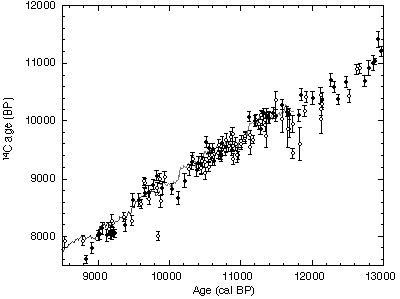Do you know of any experiments where they have tested the 14carbon method?
Here's one that gets thrown around a lot, courtesy of RAZD:
quote:
By counting varve layers of diatoms in Lake Suigetsu in Japan, scientists lead by Dr. H. Kitagawa were able to establish a chronology extending the calibration of radiocarbon dating to 45,000 years ago as well as confirming the tree ring data (note - the carbon 14 abbreviation used in article changed to "C-14" here for consistency): quote:
Lake Suigetsu is located near the coast of the Sea of Japan. A 75-m long continuous core was taken from the center of the lake. The sediments are characterized by dark-coloured clay with white layers due to spring season diatom growth. The seasonal changes in the depositions are preserved in the clay as thin, sub-millimeter scale laminations or "varves". Based on observation of varve thickness change, we expect that the annually laminated sediment records the palaeoenvironmental changes during the past 100 ka.
This sequence of annually laminated sediments not only forms a unique continuous palaeoenvironmental record after the last interglacial but also permits us to reconstruct a complete C-14 calibration extending back to at least 45 ka BP, and probably even more by means of combined isotope enrichment and AMS C-14. We have performed AMS C-14 measurements on more than 250 terrestrial macrofossil samples of the annual laminated sediments from lake Suigetsu.
Here's a graph corellating the radiocarbon dates of the material of the varve layers with their annual position in the layers:

As you can see, the correllation is quite profound. The dating is slightly off; this is due to cimatological effects on how carbon has been accumulated in living things. Also, you'll see a few outliers representing procedural error in the laboratory.
But the vast, vast majority of dates, as you can see, correllate very well. Radiocarbon dating is a valid dating method.


 ™ Version 4.2
™ Version 4.2